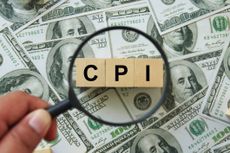Considering a 721 Exchange? Adopt a Buyer Beware Mindset
Having a tax-smart exit strategy for your real estate investment is a great idea, but if a 721 exchange is part of your plan, here's what you need to consider.


Editor’s note: This is part one of a two-part series about how to evaluate 721 exchange UPREITs when considering them as part of a 1031 exchange strategy. Part two is Three Key Items to Evaluate When Choosing a 721 Exchange.
Over the years, the use of the 721 exchange as a Delaware statutory trust exit strategy has become increasingly popular among investors for a number of reasons, including the ability to provide tax-deferral benefits, the potential for portfolio diversification, the potential for portfolio income and appreciation and enhanced liquidity.
However, real estate professionals will often cite the words caveat emptor, a Latin phrase meaning buyer beware. This concept, originating from Roman law, emphasizes the buyer's responsibility to thoroughly assess the quality and suitability of a purchase.

Sign up for Kiplinger’s Free E-Newsletters
Profit and prosper with the best of expert advice on investing, taxes, retirement, personal finance and more - straight to your e-mail.
Profit and prosper with the best of expert advice - straight to your e-mail.
This article provides valuable information for investors in order to adopt the caveat emptor mindset when considering 721 exchange UPREITs as part of a 1031 exchange strategy. What does UPREIT stand for? An umbrella partnership real estate investment trust.
Specifically, we will address two important themes regarding the 721 exchange UPREIT:
- First, an overview for how investors can use the 721 exchange UPREIT as an exit strategy for Delaware statutory trust (DST) investments.
- Second, a detailed review of some of the most important items to consider when evaluating various DST offerings and their 721 exchange UPREIT counterparts. These items are often overlooked by investors and the financial firms pitching these products, however they are of utmost importance.
When considering a 721 exchange UPREIT, understanding the DST investment is crucial. However, it is equally, if not more important, to thoroughly understand the REIT in which an investor will ultimately be invested through the 721 exchange.
First, what is a Section 721 exchange?
Section 721 of the Internal Revenue Code states that no gain or loss will be recognized when property is contributed to a partnership in exchange for an interest in the partnership. Specifically, the 721 exchange allows real estate investors to defer capital gains taxes by exchanging their property for operating partnership units (OP units) in the operating partnership of a real estate investment trust (REIT).
So, basically, this provision facilitates a tax-deferred exchange of real estate assets for OP units without triggering immediate tax consequences, providing a potentially strategic exit path for DST investors.
What are the steps to complete a 721 exchange?
The 721 exchange process basically involves three steps:
Step 1: Relinquished property sale. The investor sells their investment property with the intention of executing a 1031 exchange.
Step 2: Property exchange for DST interest. Funds from the 1031 exchange are used to purchase interests in a DST and are held for a period of time.
Step 3: The 721 exchange transaction. Operating partnership (OP) units are issued in exchange for DST interests. Interests in the DST are contributed, on a tax-deferred basis, to the 721 vehicle’s operating partnership in exchange for operating partnership units.
Why are investors selling and entering a 1031 exchange DST with a 721 exchange exit option?
There is no question that being an independent real estate investor has never been more challenging in recent years due to increased market volatility, regulatory onslaught and heightened competition, making it crucial to for investors to have a full landscape plan that includes an ultimate exit strategy. That’s why many investors are increasingly interested in selling their investment properties and 1031 exchanging into Delaware statutory trusts, which have a 721 exchange exit strategy. The potential benefits of this strategy include the following:
Tax advantages. Investors are able to 1031 exchange on a tax-deferred basis into the DST and then are able to 721 exchange on a tax-deferred basis into the operating partnership of the 721 exchange program. Investors also will potentially enjoy tax advantages via depreciation and write-offs to help shelter potential distributions.
Diversification. Many investors incur concentration risk by owning one property in a single market. On the other hand, 721 vehicles tend to own many assets diversified through different markets. The 721 exchange transaction can help diversify an individual’s portfolio, which may reduce concentration risk. As always, diversification does not guarantee profits or guarantee protection against losses. However, it is considered a prudent strategy for investors to consider.
Income potential. Investors can potentially receive income generated through distributions to the holders of the OP units. The 721 exchange vehicle has the goal of increasing income potential to investors over time through new acquisitions and portfolio optimization.
Appreciation potential. Investors can participate in potential appreciation that is realized both at the individual asset level as well as at the enterprise value level. The 721 exchange vehicle can be positioned to take advantage of market opportunities via new acquisitions designed to potentially enhance shareholder value.
Liquidity potential. The 721 exchange vehicle can provide investors with the option of liquidity on a partial or full basis. Investors potentially have the option to liquidate a portion of their shares in combination with their tax-planning strategies. Liquidity may not be a necessity or even a priority for all investors, but having it available offers investors peace of mind. It is important to note that liquidity is not guaranteed and may be limited or discontinued in certain circumstances. Investors are encouraged to read the offering material in full for a complete discussion on the 721 vehicle’s liquidity program.
No further 1031 exchange decisions. Many investors are at a point in their lives where they do not want to have to make another 1031 exchange decision in three to five years, as you would typically have to if you invested in DST offerings without a 721 exchange exit strategy. By participating in a DST with the 721 exchange as a planned exit strategy, investors have peace of mind that as they get further along in years, they and their family members will not be required to make further investment decisions, as they can be in the 721 exchange vehicle indefinitely.
On the flip side, many investors want to have options as to whether they will participate in the 721 exchange or if they will want to do a 1031 exchange at exit. Certain 721 UPREIT DSTs provide this option, while others do not. This is another factor that my firm, Kay Properties, encourages investors to consider as things do change for investors over time — therefore having the option can be vitally important.
Estate planning. Upon death, OP units can be equally split and either held or liquidated by the beneficiaries of the trust. Beneficiaries receive a step-up in basis and can avoid capital gains taxes and depreciation recapture tax. This strategy helps investors plan for the future with the opportunity to transfer wealth to heirs in a tax-efficient manner and allows for individual flexibility when liquidating.
Again, liquidity is not guaranteed and may be limited or discontinued in certain circumstances. Investors must read the offering material in full for a detailed discussion on the 721 vehicle’s liquidity program.
Part two of this series will address the considerations investors might want to look at when evaluating a 1031 exchange into a DST with a 721 exchange exit strategy.
Past performance does not guarantee or indicate the likelihood of future results. Diversification does not guarantee profits or protect against losses. All real estate investments provide no guarantees for cash flow, distributions or appreciation as well as could result in a full loss of invested principal. Please read the entire Private Placement Memorandum (PPM) prior to making an investment. This case study may not be representative of the outcome of past or future offerings. Please speak with your attorney and CPA before considering an investment.
Annualized return is defined as a total return including profit on sale and monthly distributions earned on an annualized basis.
Total return consists of initial return of investor principal, monthly distributions, and profit upon sale.
All return calculations are calculated as if the investor closed on the DST investment at the same time the property was purchased.
Diversification does not guarantee profits or protect against losses. All real estate investments provide no guarantees for cash flow, distributions or appreciation as well as could result in a full loss of invested principal. Please read the entire Private Placement Memorandum (PPM) prior to making an investment.
Please speak with your attorney and CPA before considering an investment. There are material risks associated with investing in real estate, Delaware Statutory Trust (DST) properties and real estate securities including illiquidity, tenant vacancies, general market conditions and competition, lack of operating history, interest rate risks, the risk of new supply coming to market and softening rental rates, general risks of owning/operating commercial and multifamily properties, short term leases associated with multifamily properties, financing risks, potential adverse tax consequences, general economic risks, development risks and long hold periods.
Related Content
Get Kiplinger Today newsletter — free
Profit and prosper with the best of Kiplinger's advice on investing, taxes, retirement, personal finance and much more. Delivered daily. Enter your email in the box and click Sign Me Up.

Dwight Kay is the Founder and CEO of Kay Properties and Investments LLC. Kay Properties is a national 1031 exchange investment firm specializing in Delaware statutory trusts. The www.kpi1031.com platform provides access to the marketplace of typically 20-40 DSTs from over 25 different sponsor companies. Kay Properties team members collectively have over 340 years of real estate experience, have participated in over $39 billion of DST 1031 investments, and have helped over 2,270 investors purchase more than 9,100 DST investments nationwide.
-
 Stock Market Today: Markets Waver as Inflation Continues to Ease
Stock Market Today: Markets Waver as Inflation Continues to EaseStocks gave up early gains as waning consumer price inflation leaves rate-cut bets essentially unchanged.
By Dan Burrows Published
-
 October CPI Report Hits the Mark: What the Experts Are Saying About Inflation
October CPI Report Hits the Mark: What the Experts Are Saying About InflationCPI While the current pace of rising prices appears to have leveled off, the expected path of rate cuts has become less certain.
By Dan Burrows Published
-
 Stock Market Today: Markets Waver as Inflation Continues to Ease
Stock Market Today: Markets Waver as Inflation Continues to EaseStocks gave up early gains as waning consumer price inflation leaves rate-cut bets essentially unchanged.
By Dan Burrows Published
-
 October CPI Report Hits the Mark: What the Experts Are Saying About Inflation
October CPI Report Hits the Mark: What the Experts Are Saying About InflationCPI While the current pace of rising prices appears to have leveled off, the expected path of rate cuts has become less certain.
By Dan Burrows Published
-
 Nvidia Earnings: Updates and Commentary
Nvidia Earnings: Updates and CommentaryNvidia earnings have become a key event on Wall Street which makes the AI bellwether's next report, due out after the November 20 close, must-see viewing for investors.
By Kiplinger Staff Last updated
-
 What's Behind Starbucks Stock's New Sell Rating?
What's Behind Starbucks Stock's New Sell Rating?Starbucks stock has rallied hard since Brian Niccol was tapped as the coffee chain's new CEO, but one analyst thinks turnaround plans will be costly.
By Joey Solitro Published
-
 Cava Stock: Analysts Rush to Raise Price Targets After Earnings
Cava Stock: Analysts Rush to Raise Price Targets After EarningsWedbush, for one, issued a Street-high price target for Cava stock after its beat-and-raise quarter. Here's what you need to know.
By Joey Solitro Published
-
 Why Spotify Stock Is Surging Despite Its Earnings Miss
Why Spotify Stock Is Surging Despite Its Earnings MissSpotify stock is notably higher Wednesday after the audio streaming company gave an upbeat fourth-quarter outlook. Here's what you need to know.
By Joey Solitro Published
-
 Is Now a Good Time to Open a Roth IRA?
Is Now a Good Time to Open a Roth IRA?Think you might want to open a Roth IRA? Roth IRAs offer tax-free growth of your investments and no RMDs, but income limits are low and you have to wait to withdraw earnings.
By Kathryn Pomroy Published
-
 How Trusts Can Be Used to Protect LLCs From Creditors
How Trusts Can Be Used to Protect LLCs From CreditorsCombining limited liability companies with domestic asset protection trusts can achieve maximum asset protection.
By Rustin Diehl, JD, LLM Published